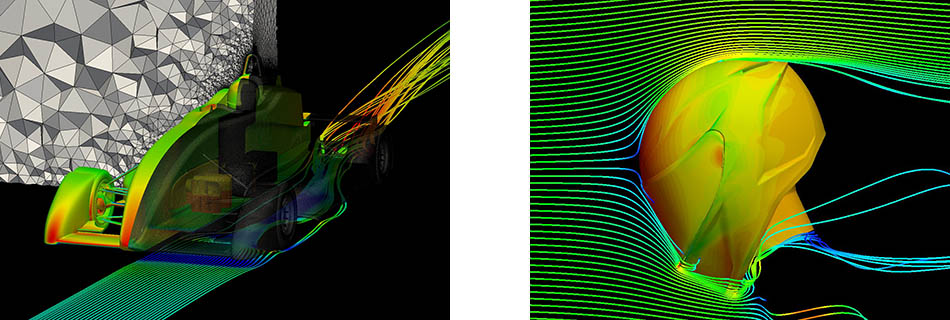CFD initially requires a mathematical representation of the model, available in a standard exchange format such as IGES. The object's surface must then be approximated by small surface elements. This procedure, known as SURFACE MESHING, has to be accurately pursued as the requirements for mesh elements number, type, quality and refinement may vary depending on the fluid dynamic problem at hand in order to ensure a proper simulation.
Once the surface of the object and the boundaries of a suitable volume around it are defined, the amount of air in between is consequently sub-divided into millions of microscopic elements, which constitute the volume mesh. Again, volume mesh parameters have to be correctly defined, as they are likely to have a large influence on the overall quality.
The mesh generation stage is usually the most expensive aspect of the process, with the initial CAD geometry needing to be of high quality in order to reduce meshing time. A mathematical model is then used to dissect the evolution of flow within each volume element. The computation of the basic flow properties may take many hours to complete, depending on the number of volume elements in the mesh.
Post-processing scripts provide a further evaluation of various quantities – which can be used for later analysis – such as aerodynamic loads/stresses, pressure coefficients, streamlines and pressure distribution. Every piece of data can be visualised as an image or movie, helping the analyst to properly understand flow behaviour, and recognise and identify separated regions and vortex structures.
CFD results may also be used to define new and improved geometries, which are further analysed and create an optimisation loop.
